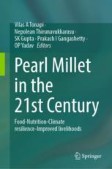Search
Search Results
-
Mating types and physiological races of Verticillium dahliae in Solanaceae crops in Brazil
Verticillium dahliae is a soil-borne fungal pathogen responsible for vascular wilt diseases in more than 300 dicotyledonous species, including...

-
Simulation of Physiological Adaptation Processes
In many settings, sports training aims to increase athletic performance and thus athletic performance or to counteract a decline in performance. In...
-
Assessment of physiological races of Exserohilum turcicum isolates from maize in Argentina and Brazil
Northern corn leaf blight (NCLB) is one of the most important diseases in maize worldwide. It is caused by the fungus Exserohilum turcicum, which...

-
Physiological race characterisation of Fusarium oxysporum strains infecting tomato employing candidate pathogenicity genes and host resistance
Physiological races of 14 strains of Fusarium oxysporum f.sp. lycopersici were established by PCR profiling SIX gene expressions. No amplification of...

-
Genetic and physiological characterization of sunflower resistance provided by the wild-derived OrDeb2 gene against highly virulent races of Orobanche cumana Wallr
Key messageOr Deb2 confers post-attachment resistance to Orobanche cumana and is located in a 1.38 Mbp genomic interval containing a cluster of...

-
Plant responses to concurrent abiotic and biotic stress: unravelling physiological and morphological mechanisms
With the increasing impact of climate change and global warming, not only abiotic stress factors have gained prominence, but their influence on...

-
Use of thermography and physiological rate to assess heat tolerance in cattle breeds
Thermography has grown in use in recent years. It is a valuable tool for measuring animal heat tolerance under heat stress conditions since it is a...

-
Differences in pathogenicity and physiologic races between Pyricularia oryzae isolates from indica and japonica rice varieties
The objective of this study was to preliminarily analyze the differences in pathogenicity and physiologic races between Pyricularia oryzae isolates...

-
Comparative transcriptomic analysis of races 1, 2, 5 and 6 of Fusarium oxysporum f.sp. pisi in a susceptible pea host identifies differential pathogenicity profiles
BackgroundThe fungal pathogen Fusarium oxysporum f.sp. pisi (Fop) causes Fusarium wilt in peas. There are four races globally: 1, 2, 5 and 6 and all...

-
The molecular detection of Fusarium oxysporum f. sp. dianthi races in protected carnation growing areas in western Turkey
Fusarium wilt among carnations, caused by Fusarium oxysporum f. sp. dianthi W.C. Snyder & H.N. Hansen, is the most important disease in all major...

-
Salinity Stress in Pearl Millet: From Physiological to Molecular Responses
Salinity stress is a major constraint for crop growth, development, and yield, worldwide. Salinity stress is among the key abiotic stresses that...
-
Multivariate analysis for morpho-physiological and milling traits along with molecular profiling of known bacterial blight resistance genes in advanced breeding lines of rice
Rice ( Oryza sativa L.) yield, quality and resistance to various biotic and abiotic stresses are the major barriers of rice production worldwide....

-
Molecular genetic basis of resistance to downy mildew in cucumber and melon
Both cucumber and melon are members of the Cucurbitaceae family and are important vegetable crops throughout the world. Among the most harmful...
-
Comparative genetic, biochemical and physiological analysis of sodium and chlorine in wheat
Plant with a great diversity shows several responses towards the biotic and abiotic stresses. Among these abiotic stresses, salinity is the main...

-
CRISPR/Cas9-mediated knockout of Bsr-d1 enhances the blast resistance of rice in Northeast China
Key MessageThe blast resistance allele of OsBsr-d1 does not exist in most japonica rice varieties of Jilin Province in China. The development of Bsr-d1...

-
Virulence analysis of wheat stem rust isolates (Puccinia graminis f. sp. tritici) in Iran using differential lines
Wheat stem rust caused by the fungus Puccinia graminis f. sp. tritici is one of the most destructive diseases. Here, we collected 43 stem rust...

-
Race Composition of the Novosibirsk Population of Puccinia graminis f. sp. tritici
AbstractWestern Siberia consists of areas with different climate and agricultural requirements and independent pathogenic populations of wheat stem...

-
Virulence analysis of wheat powdery mildew races during 2019–2020 seasons in Egypt
Wheat powdery mildew ( Blumeria graminis f. sp. tritici , Bgt ) has become a principal disease occurring annually in Egypt followed by rusts which have...

-
Effect of culture filtrate containing fusaric acid of Fusarium oxysporum f. sp. ciceris on defence enzymes in chickpea
Production of fusaric acid (FA) by Fusarium oxysporum f. sp. ciceris (Foc) race 4 and 8 was estimated through the HPLC in culture filtrate which was...

-
Develo** Crop Varieties by Physiological Breeding for Improving Plant Nutrition
Living organism acquires and utilizes the nutrients from soil through a process called as nutrition for growth and development. These nutrients may...
